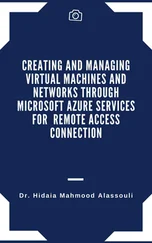Selma Boumerdassi CEDRIC, CNAM Paris France
Boutheina Dab VMware, Hauts‐de‐Seine La Defense France
and
LiSSi Lab, UPEC, Val de Marne
Vitry sur Seine
France
Ilhem Fajjari Orange Labs, Orange Hauts‐de‐Seine Chatillon France
Ruben Milocco GCAyS, UNComahue Neuquen Argentina
Pascale Minet Inria Paris France
Eric Renault LIGM, Univ. Gustave Eiffel, CNRS ESIEE Paris Marne‐la‐Vallée France
Oussama Soualah OS‐Consulting Athis‐Mons, Essonne France
and
LiSSi Lab, UPEC, Vitry sur Seine
Val de Marne
France
Thanks to the advent of the long‐awaited fifth‐generation (5G) mobile networks, mobile data and online services are becoming widely accessible. Discussions of this new standard have taken place in both industry and academia to design this emerging architecture. The main near future objective is to ensure the capability to respond to the different applications needs such as videos, games, web searching, etc., while ensuring a higher data rate and an enhanced Quality of Service (QoS). While no official standardization is yet delivered for 5G, experts assure that, the impressive proliferation of smart devices will lead to the explosion of traffic demand. Billions of connected users are expected to deploy a myriad of applications.
In this respect, recent statistics elaborated by CISCO Visual Networking Index (VNI) highlight that the annual global IP traffic will roughly triple over the next 5 years and will reach 2.3 zettabytes by 2020. More specifically, it is expected that smart phones traffic will impressively increase from  in 2015 to
in 2015 to  of the total of IP traffic in 2020. Mobile data traffic per month will grow from 7 Exabytes in 2016 to 49 Exabytes by 2021. In particular, tremendous video traffic will be crossing IP networks to reach
of the total of IP traffic in 2020. Mobile data traffic per month will grow from 7 Exabytes in 2016 to 49 Exabytes by 2021. In particular, tremendous video traffic will be crossing IP networks to reach  of the totality of IP traffic. It is also expected that the number of connected mobile devices will be more than three times the size of the global population by 2020. In this regard, future networks are anticipated to support and connect plenty of devices, while offering higher data rate and lower latency.
of the totality of IP traffic. It is also expected that the number of connected mobile devices will be more than three times the size of the global population by 2020. In this regard, future networks are anticipated to support and connect plenty of devices, while offering higher data rate and lower latency.
To cope with this unprecedented traffic explosion, the service providers are urged to rethink their network architectures. In fact, efficient scalable physical infrastructures, e.g., Data Centers (DCs), are required to support the drastically increasing number of both online services and users.
To manage their DCs infrastructure, many of giant service tenants are resorting to virtualization technologies making use of Software Defined Networking (SDN) and Network Functions Virtualization (NFV).
On the one hand, SDN controllers offer the opportunity to implement more powerful algorithms thanks to a real‐time centralized control leveraging an accurate view of the network. Indeed, thanks to the separation of the forwarding and the control planes, the managements' complexity of the network infrastructure is considerably reduced while providing tremendous computational power compared to legacy devices. On the other hand, thanks to NFV paradigm, network functions and communication services are first softwarized and then cloudified, so that they can be on demand orchestrated and managed as cloud‐native IT applications. It is straightforward to see that these approaches are complimentary. They offer a new way to design and manage data centers while guaranteeing a high level of flexibility and scalability. The new emerging SDN and NFV technologies requires scalable infrastructures. To that end, a great deal of efforts have been devoted to the design of efficient DC architectures. Indeed, Internet giants ramped up their investment in data centers/IT infrastructures and poured in billions of dollars to widen their global presence and improve their competitiveness in the Cloud market.
In this context, the latest Capital Expenditure (CAPEX) of the five largest‐scale Internet operators, Apple, Google, Microsoft, Amazon, and Facebook, increased by  in 2016 in order to invest in designing their DCs. Over the past years, these companies have spent, in total, a capital of 115 $ billions, to build out their DCs. For instance, Google has invested millions of dollars in expanding its data centers spread all over the world: Taiwan, Latin America, Singapore, etc. Facebook has started, since 2010, building out its own DCs in Altoona, Iowa, and North Carolina. In this regard, efficiently designing data centers is a crucial task to ensure scalability required to meet today's massive workload of Cloud applications. Moreover, it is mandatory to deploy the proper mechanisms for routing and resource allocation to communication flows in DCs.
in 2016 in order to invest in designing their DCs. Over the past years, these companies have spent, in total, a capital of 115 $ billions, to build out their DCs. For instance, Google has invested millions of dollars in expanding its data centers spread all over the world: Taiwan, Latin America, Singapore, etc. Facebook has started, since 2010, building out its own DCs in Altoona, Iowa, and North Carolina. In this regard, efficiently designing data centers is a crucial task to ensure scalability required to meet today's massive workload of Cloud applications. Moreover, it is mandatory to deploy the proper mechanisms for routing and resource allocation to communication flows in DCs.
To deal with these challenges, we investigate, in this book, a radically new methodology changing the design of traditional Data Center Network (DCN) while ensuring scalability and enhancing performance. First, in Chapter 1, we will overview the Data Center network architecture. Then, in Chapter 2, we will summarize the main related DC networks routing strategies at layer‐2, layer‐3, and up layers. Besides, an overview of Traffic Engineering (TE) techniques from link‐state while considering TCP fairness models. Next, in Chapter 3, we will overview the related work addressing intra‐data center resource allocation and routing in both wired and/or wireless (i.e., hybrid) data center networks. Afterwards, in Chapter 4, we will summarize the main reliable virtual network embedding strategies connecting geographically distributed data centers. Thanks to network function virtualization, CAPEX and OPEX are deeply reduced while ensuring the requested quality of service is more complex. Finally, in Chapter 5, we will provide a methodology to evaluate the energy cost reduction in DC brought by proactive management, while keeping a high level of user satisfaction.
Конец ознакомительного фрагмента.
Текст предоставлен ООО «ЛитРес».
Прочитайте эту книгу целиком, купив полную легальную версию на ЛитРес.
Безопасно оплатить книгу можно банковской картой Visa, MasterCard, Maestro, со счета мобильного телефона, с платежного терминала, в салоне МТС или Связной, через PayPal, WebMoney, Яндекс.Деньги, QIWI Кошелек, бонусными картами или другим удобным Вам способом.

 in 2015 to
in 2015 to  of the total of IP traffic in 2020. Mobile data traffic per month will grow from 7 Exabytes in 2016 to 49 Exabytes by 2021. In particular, tremendous video traffic will be crossing IP networks to reach
of the total of IP traffic in 2020. Mobile data traffic per month will grow from 7 Exabytes in 2016 to 49 Exabytes by 2021. In particular, tremendous video traffic will be crossing IP networks to reach  of the totality of IP traffic. It is also expected that the number of connected mobile devices will be more than three times the size of the global population by 2020. In this regard, future networks are anticipated to support and connect plenty of devices, while offering higher data rate and lower latency.
of the totality of IP traffic. It is also expected that the number of connected mobile devices will be more than three times the size of the global population by 2020. In this regard, future networks are anticipated to support and connect plenty of devices, while offering higher data rate and lower latency. in 2016 in order to invest in designing their DCs. Over the past years, these companies have spent, in total, a capital of 115 $ billions, to build out their DCs. For instance, Google has invested millions of dollars in expanding its data centers spread all over the world: Taiwan, Latin America, Singapore, etc. Facebook has started, since 2010, building out its own DCs in Altoona, Iowa, and North Carolina. In this regard, efficiently designing data centers is a crucial task to ensure scalability required to meet today's massive workload of Cloud applications. Moreover, it is mandatory to deploy the proper mechanisms for routing and resource allocation to communication flows in DCs.
in 2016 in order to invest in designing their DCs. Over the past years, these companies have spent, in total, a capital of 115 $ billions, to build out their DCs. For instance, Google has invested millions of dollars in expanding its data centers spread all over the world: Taiwan, Latin America, Singapore, etc. Facebook has started, since 2010, building out its own DCs in Altoona, Iowa, and North Carolina. In this regard, efficiently designing data centers is a crucial task to ensure scalability required to meet today's massive workload of Cloud applications. Moreover, it is mandatory to deploy the proper mechanisms for routing and resource allocation to communication flows in DCs.










